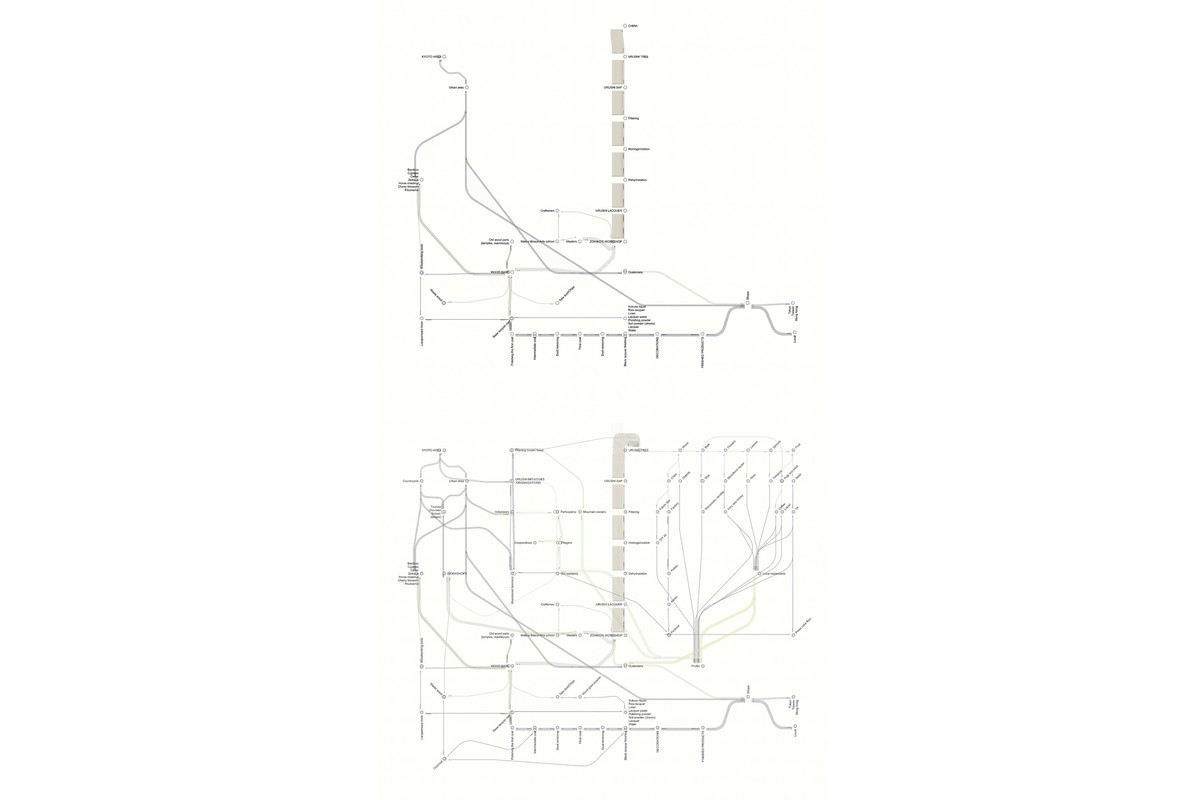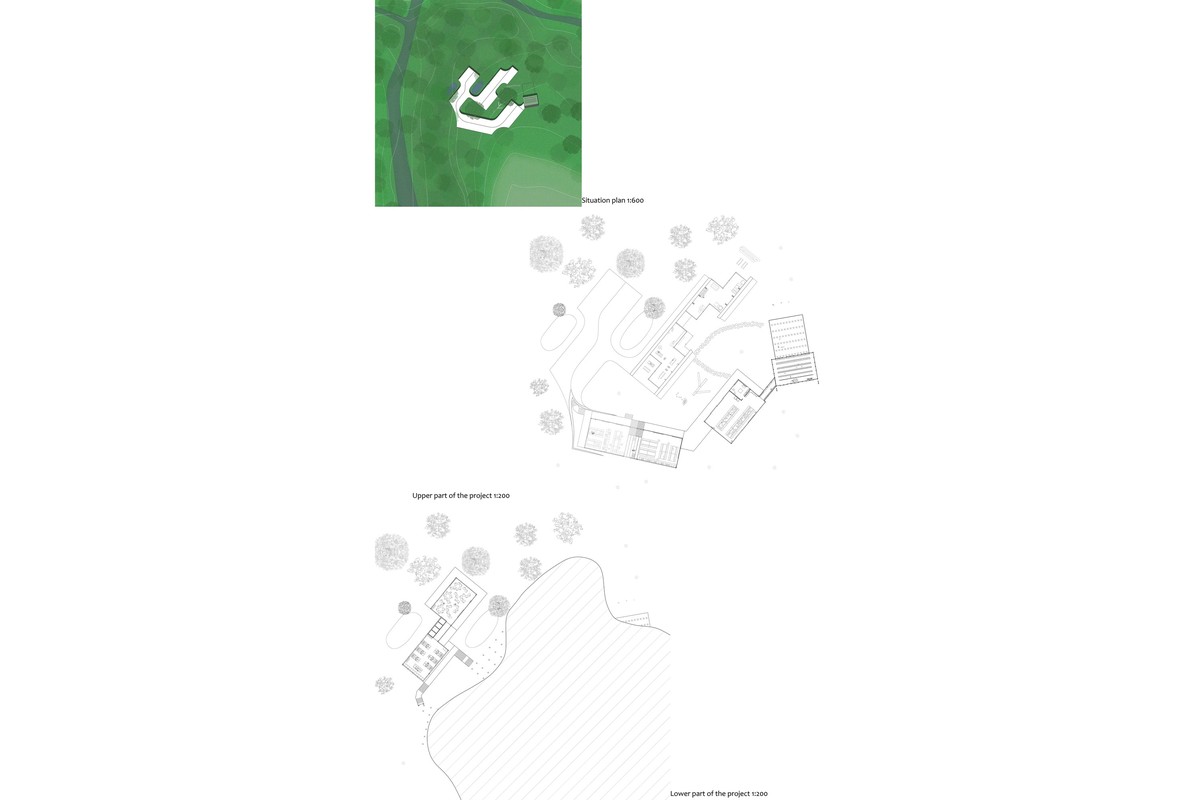Changing Habits : Towards Lacquer Self-Sufficiency Kyo-Shikki | Japanes Lacquerware | Zohiko
Valentina Daria Takatch
/Yang Zhong












Changing Habits : Towards Lacquer Self-Sufficiency Kyo-Shikki | Japanes Lacquerware | Zohiko
Valentina Daria Takatch /
Yang Zhong
The project focuses on the making of Kyo-Shikki and the byproducts of the urushi tree, where the lacquer is produced from. To promote the urushi tree, which has a bad reputation because of its toxicity and difficulties in growing it, the circular twin comes in the form of an educational center for children. There children can be taught how to use lacquerware and how to take care of it, as well as show the beauty of urushi and all the possibilities it offers.
The location is close to the countryside towards the mountains and forest, in the transitioning part between forests and urban area. This allows easy access for children while also being close to nature.
The education center’s program consists of three parts; a greenhouse, recycling, and workshops. Starting from the greenhouse the children can see the trees grow from sprouts to sapling, and then to trees that eventually blend into the surrounding forest. In the recycling area, the process of breaking down different parts of the urushi tree can be seen. In the lacquerware workshop the children can create their own lacquerware. Because of the long process of applying the lacquer, the making of Kyo-Shikki stretches over several days and allows the children to visit various other workshops exploring the use of the urushi tree. In the kitchen and dining hall the children can use the finished self-made lacquerware on the last day.
The straw roof connects the buildings to show unity of the spaces, even though they are separated elements. It takes advantage of the sloped soil of Kyoto’s region. To have minimal impact on the landscape the building is elevated on stilts to allow a wide flexibility and to allow for a lightweight feeling. The building materials consist of local wood and recycled glass.








![FERDINANDO FUGA [1699-1782], Albergo dei Poveri, Naples, 1751](https://ia-living-archives-2021.s3-zh.os.switch.ch/filer_public_thumbnails/filer_public/26/fb/26fba924-c5b6-402b-a6a9-000d0ab54d0d/img_7203.jpg__400x0_q90_subsampling-2.jpg)
![FERDINANDO FUGA [1699-1782], Cimitero delle 366 fosse, Naples, 1762](https://ia-living-archives-2021.s3-zh.os.switch.ch/filer_public_thumbnails/filer_public/65/a4/65a42ffc-034e-4c52-a944-a1c849f92ed4/img_7218.jpg__400x0_q90_subsampling-2.jpg)
![FERDINANDO FUGA [1699-1782], Cimitero delle 366 fosse, Naples, 1762](https://ia-living-archives-2021.s3-zh.os.switch.ch/filer_public_thumbnails/filer_public/cf/e6/cfe6a3c7-f5be-45a5-b794-0ae0c803e153/img_7221.jpg__400x0_q90_subsampling-2.jpg)
![FERDINANDO FUGA [1699-1782], Palazzo dei granili, Naples, 1779](https://ia-living-archives-2021.s3-zh.os.switch.ch/filer_public_thumbnails/filer_public/1b/5b/1b5b4561-40aa-4511-a16d-50211fd6523d/img_7238.jpg__400x0_q90_subsampling-2.jpg)
![FERDINANDO FUGA [1699-1782], Albergo dei Poveri, Naples, 1751](https://ia-living-archives-2021.s3-zh.os.switch.ch/filer_public_thumbnails/filer_public/35/5f/355fd093-3dc7-4f61-b41f-27d9b6b9ddcc/img_7208.jpg__400x0_q90_subsampling-2.jpg)
![FERDINANDO FUGA [1699-1782], Palazzo dei granili, Naples, 1779](https://ia-living-archives-2021.s3-zh.os.switch.ch/filer_public_thumbnails/filer_public/e4/dd/e4dded98-6fd6-4f63-9e12-c198d199367e/img_7239.jpg__400x0_q90_subsampling-2.jpg)



















